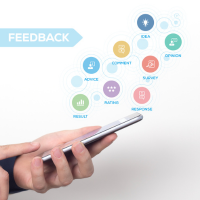Embracing Diversity in Learning Styles
In our field of learning and development, we often talk about the importance of personalized instruction. This isn’t just a buzzword; it’s the recognition that each individual’s learning journey is unique. By understanding and adjusting to various learning styles, we can design training programs that truly engage, resonate, and produce lasting results.
Understanding Diverse Learning Styles
Every individual has a unique way of absorbing and processing information. In the sphere of professional training, it’s imperative that we recognize these varied learning styles to make our programs more effective. By identifying whether someone is a visual, auditory, reading/writing, or kinesthetic learner, we can tailor our content and delivery methods accordingly.
Visual Learners: These individuals prefer to see and observe things. They benefit from diagrams, charts, and graphical illustrations. For them, a well-structured PowerPoint or infographic can be more effective than a lengthy verbal explanation.
Auditory Learners: They learn best by listening. Podcasts, lectures, and discussions resonate well with this group. It’s helpful to incorporate sound bites, music, or even group discussions in training modules to cater to them.

Reading/Writing Learners: These people prefer reading text and writing down notes. They thrive with reading assignments, manuals, and written explanations. Providing them with detailed handouts or digital resources they can read at their own pace can be beneficial.
Kinesthetic Learners: They learn best by touching and doing. Interactive activities, workshops, or even role-playing can be essential tools for their learning. It’s crucial to have hands-on sessions or practical case studies in the curriculum for these individuals.
The Significance of Adaptive Learning
In the modern learning landscape, a one-size-fits-all approach is no longer adequate. By creating adaptive learning experiences that cater to individual preferences, we’re not just increasing engagement but also boosting retention rates. Personalizing the learning journey gives each participant a sense of value and makes the content more relatable.
Benefits of this approach include:
Enhanced Engagement: Customized learning experiences, tailored to individual styles, invariably lead to greater involvement. Participants feel more connected when they perceive the content as designed specifically for them.
Improved Retention: It’s a simple fact that we remember things better when presented in a manner

we prefer. Hence, recognizing and implementing diverse learning styles can skyrocket information retention rates.
Personalized Experiences: It goes beyond just the material. It’s about making each learner feel that their unique learning process is acknowledged and catered to, which can lead to a more enriching experience.
Efficient Learning: When training materials align with a participant’s preferred learning style, the speed and effectiveness of the learning process can significantly improve. This means less time spent on re-training and more on practical application.
Implementing Adaptive Learning Strategies
As L&D professionals, we have the tools and knowledge to craft truly adaptive programs. Begin by assessing your audience. Understand their learning preferences through assessments or surveys. Once you have this data, you can diversify your content to cater to all.
Diverse Content: Today’s digital age offers a plethora of formats. Incorporate videos, podcasts, articles, and interactive activities to cater to every style. This also helps break the monotony and keep sessions fresh and engaging.
Feedback Loops: One of the cornerstones of effective training is feedback. Regularly gather input from participants to understand what’s working and what isn’t. This iterative process helps in refining learning experiences in real-time.
Continuous Evolution: Just as the business world is in a state of constant flux, so are learning methods. It’s crucial to keep updating and tweaking training programs to ensure they stay relevant and effective.
The future of efficient training and development lies in adaptivity. By understanding and leveraging diverse learning styles, L&D professionals can create more resonant, effective, and forward-thinking training programs. Embrace adaptivity to cultivate engaged, informed, and continuously evolving professional teams.

